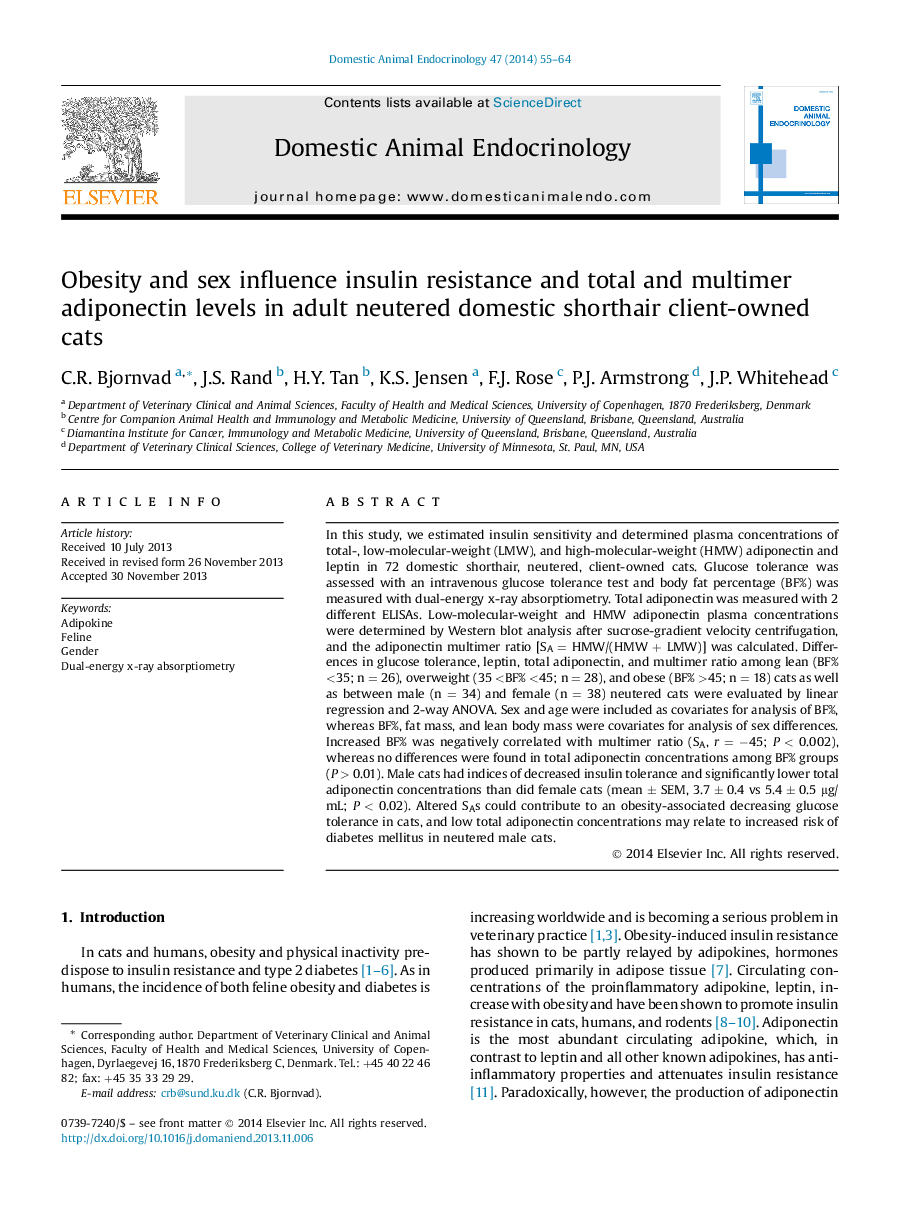| Article ID | Journal | Published Year | Pages | File Type |
|---|---|---|---|---|
| 2393512 | Domestic Animal Endocrinology | 2014 | 10 Pages |
In this study, we estimated insulin sensitivity and determined plasma concentrations of total-, low-molecular-weight (LMW), and high-molecular-weight (HMW) adiponectin and leptin in 72 domestic shorthair, neutered, client-owned cats. Glucose tolerance was assessed with an intravenous glucose tolerance test and body fat percentage (BF%) was measured with dual-energy x-ray absorptiometry. Total adiponectin was measured with 2 different ELISAs. Low-molecular-weight and HMW adiponectin plasma concentrations were determined by Western blot analysis after sucrose-gradient velocity centrifugation, and the adiponectin multimer ratio [SA = HMW/(HMW + LMW)] was calculated. Differences in glucose tolerance, leptin, total adiponectin, and multimer ratio among lean (BF% <35; n = 26), overweight (35
